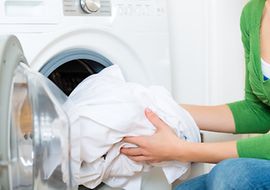DIN Consumer Council
News
News and information concerning DIN Consumer Council's recent activities.
Search News
 © AdobeStock: gopixa
© AdobeStock: gopixa
Study of the DIN Consumer Council on the usability and consumer acceptance of tethered caps for beverage containers
( 2024-11-28 ) Against the background that beverage containers and their caps regularly head the top 10 list of single-use plastic items found on beaches, the European Union has issued Directive 2019/904/EU on the reduction of the impact of certain plastic products on the environment. This so-called Single-Use Plastics Directive stipulates, among other things, that plastic beverage containers with a capacity of up to three liters may only be placed on the European market from the 3rd of July 2024, if their plastic caps remain attached to the beverage container. More
New Management for the DIN Consumer Council
( 2023-11-09 ) Since October 1st, 2023, Karin Both handed over the management and group leadership of the DIN Consumer Council and left DIN. She led the DIN Consumer Council for over 30 years and promoted the representation of consumer interests in standardization. We would like to thank her very much for her dedication and commitment and wish her all the best! As of November 1st, 2023, Natalie Tang had taken over the leadership of the DIN Consumer Council office and the management of the DIN Consumer Council. Ms Tang brings extensive knowledge and experience from many years of working in the DIN Consumer Council. With a background in home economics and nutrition scienes, Ms Tang started working in the DIN Consumer Council’s office on November 1 2009 as project manager, and promoted September 2022 to senior project manager for consumer representation in standardization, especially concerning the areas of food hygiene, food analysis and services. Now, in addition to management and group ... More
 © Andrey Popov / Fotolia.com
© Andrey Popov / Fotolia.com
Study „Costumer complaints related to buying furniture“ Results of study „Costumer complaints related to buying furniture“, commissioned by DIN Consumer Council available
( 2016-03-31 ) When buying furniture and shortly after the first use, consumers quite frequently experience problems with respect to quality and usability of the purchased item, leading to complaints. These are often not sufficiently being dealt with by the retailer or aftersales services and are therefore being brought to court. The authors of this study are expert witnesses and deal with these cases inter alia. In this context it became evident that sometimes there were no national or European standards (no consumer friendly standards respectively) available that could help clarifying the problems underlying the consumer complaints. Retailer or producers often use to declare the source of the problem as a product specific characteristic, hence not constituting a deficiency. Roundabout 500 court-cases related to furniture dated from the last three years were examined, leading to a detailed analysis of approximately 230 court cases that are representative with respect to the product group (e.g. More
 © Kzenon / Fotolia.com
© Kzenon / Fotolia.com
How do consumers use a washer-dryer? The results of a study commissioned by DIN Consumer Council entitled: "Washer-dryer consumer behaviour and possible consequences for standardisation and energy labelling/ecodesign for washer-dryers" are now available.
( 2015-11-04 ) Up to now, there is only little information about the use of washer-dryers. Do consumers use these appliances mainly as washing machines? Is the wash load always split in two parts for drying or washed and dried continuously? What are the consumer expectations regarding the Energy-Label for washer-dryers? The Energy-Label for Washer-Dryers is still based on a European Directive from 1996. The Directives for washing machines and tumble driers were revised already in 2010 respectively 2012. Besides the layout (use of symbols instead of text) the standard tests were changed. Also the energy efficiency classes were revised (introduction of A + / A ++ / A +++). Tumble dryers, washing machines and washer-dryers are normally arranged next to each other in the salesroom. For the consumer it is impossible to compare the information (energy, water consumption etc. ) given on the label of a washing machine and a tumble dryer with the information given on a washer-dryer as the values are ... More